|
You can read about Ricotta Forte and 30 other Italian cheeses in my post "31 Italian Cheeses: Goat, Cow, Buffalo and Sheep, Oh My!"
--Jerry Finzi If you know of other cheese lovers, post a link to this page where they can see it... grazie! First things first... what do you call people engaged in amore? A boyfriend is a Fidanzato. The girlfriend is a Fidanzata. When both get engaged they are Fidanzarsi. Two lovers together are called La coppia--the couple. The lovers are called gli amante (the lovers) or simply amante.
Ok, so you meet someone interesting and want to go on a date... You might say "Ti va di uscire qualche volta?" (Do you want to go out sometime?) The date itself is called un appuntamento. When things start to go more romantic, you go on un appuntamento romantico. If someone stands you up for your appuntamento, they call it dare buca--giving one the hole or leaving someone in a hole. Here are some other phrases to learn in the event that you are looking for Love--or if Love finds you--in Bella Italia...
If you enjoyed this post, please share it with your friends... ciao! The most fascinating thing about Italy is its age and history. Sometimes you come up with ancient stories that boggle the mind... here's one:
The so-called Lovers of Valdaro, also dubbed as the "Valdaro Lovers," are a pair of human skeletons dating back 6,000 years discovered by archaeologists at a Neolithic tomb in S.Giorgio near Mantova, Italy, in 2007. (My post about Mantova here). The two skeletons appear to have died or were interred facing each other with arms around each other, thus reminiscent of a "lovers' embrace". Although it is not the only Neolithic burial to contain more than one person, double burials are rare, and the pose and the positioning of this couple are unique. Scientists believe that the pair is a man and woman no older than 20 years old and approximately 5'2" in height. After the story made the news with a myriad Stone Age Romeo and Juliet headlines, the site had to be guarded night and day to protect it from the carelessly curious and would-be looters. After all, Mantua (also called Mantova) is the city where Shakespeare's Romeo was exiled and was told that his Juliet was dead. The composer Giuseppe Verdi chose it as the location for his opera Rigoletto, another story of star-crossed love and death. The landowner discovered the couple while excavating to build a warehouse, which he still needed to do, so archaeologists decided to remove the entire grave. To keep the couple in their entwined position, archaeologists cut away and lifted the entire section of earth in which they were entombed. The whole burial, all six and half feet cubed of it, was then taken intact in a box to a Musei Civici in Como for further analysis. The male skeleton (on the left side of the embrace) was found with a flint arrowhead near his neck. His lady friend had a long flint blade along her thigh, plus two flint knives under her pelvis. There was initial speculation that the weapons might have been the cause of death. Osteological examination however found no evidence of violent death, no fractures, and no trauma, so the most likely explanation is the flint tools were buried along with the people as grave goods. Scientists say that given their discovery in a necropolis, it’s unlikely that they died by accident while hugging, to keep warm during a freezing night, for instance. They speculate that they were positioned that way after death. I think the story could be more like Romeo and Juliet that the scientists are likely to admit. One could imagine angry parents forcing them into a grave and making them take each other's lives using the flint blades. Perhaps they used poison--difficult to find traces of after 6000 years--just like Juliet. Perhaps they were the prince and princess of a long forgotten tribe that died while together out in the cold and their people buried them in the positions of lovers. This is really a story to ponder... The skeletons were displayed briefly in public for the first time in September 2011 at the entrance of Mantua's Archaeological Museum, thanks to the effort of the association "Lovers in Mantua" which is seeking a permanent home for the ancient couple. --Jerry Finzi If you enjoyed this post, please tell your friends about Grand Voyage Italy. Grazie! "It doesn't matter what percent of blood runs in your veins... 1/4, 1/2 or even with both parents being of Italian decent. Can you speak Italian? Have you lived in Italy at all? Have you at least a basic knowledge of our culture, the history, the reality of contemporary Italy ? If you don't, you are not considered Italian here. You are just an American who think it's cool to claim to be Italian but who doesn't have any real connection or ties with Italy. This is why we think it is strange for a so-called 'Italian-American' to come to Italy and expect distant relations to host them for dinner or become their friends at all."
Found in the Cappella Sansevero in Naples, this wonderful sculpture's most magnificent feature is the fish net... yes, carved by a Master's hand in marble. Amazing.
"Unlike Americans, we Italians do not believe in lines. The unspoken rule is whoever is the most clever or most aggressive and gets to the front first, wins. What really matters is who gets there first, so you will find that Nonne, ladies, mothers with children, even children by themselves or priests will cut you without a thought. We do not see this as cutting. We just were smarter than the next person and got there first. Most Americans have very loud mouths but in the case of waiting on lines are really shy and timid. No wonder why your country keeps falling behind..."
Bougainvillea in the world of botany is described as a "genus of thorny ornamental vines, bushes, and trees with flower-like spring leaves near its flowers". But in Italy they simply describe the feeling, the romance of the country--by their loveliness, their sheer abundance and cascading lusciousness. They are native to Brazil and Peru, which is why they do so well in the near tropical climate of Italy. Their spiky, thorny vines can grow up to 40 feet tall, rambling up the front of many historic and romatic structures all throughout Italy. They are evergreen where rainfall occurs all year, or drop their leaves in areas with a dry season. The source of the stunning colors is not actually from the flowers of the plant. Each cluster of three tiny white flowers is surrounded by three or six colored leafy bracts--the source of the colors. They can be pink, magenta, purple, red, orange, white, or yellow. Enjoy this selection of amazing climbers... --Jerry Finzi
If you enjoyed this post, please share it with your gardening friends... ciao! "Here in Italy our homes are much smaller than in America, so we have become very comfortable existing in close quarters. There are no wide sidewalks, no enormous 30-person elevators, and hardly any of the ridiculously huge cars like Americans drive. When you are waiting in a store, don't be surprised if Italians stand very close to you. If there is something we want to see, we have learned that if we don't push through to see it first, we'll never see it. If you are walking towards us on a sidewalk, we probably will not move. If you don't move out of the way first, you will get a bumped shoulder... we stand our ground. We have so precious little space when compared to you Americans where you have more than the space you actually need. We appreciate the closeness--you don't."
The Hoboken Italian Festival, the premier Italian-American festival in the New Jersey tri-state area, is nearly 85 years old, and is derived from the 600 year old sagre (festival) of the Madonna Dei Martiri held each year in Molfetta (Puglia), Italy. Many Italian immigrants--like my father Saverio (Sal) Finzi with his mother, father, brother and sister--came from Molfetta to Hoboken in hopes of building their new American life. This festival has merged into a celebration of Hoboken, the religious Sagre, or feast day, and to honor Italian families who came from Molfetta. The festival occurs yearly, the weekend after Labor Day, for 4 days at Sinatra Park, on the historic waterfront of Hoboken, NJ. The highlight of the feast, beyond the fabulous views of the Manhattan skyline and the wide variety of foods and entertainment, is the day long procession through the streets of Hoboken, including a painstaking reenactment of the "Blessing of the Fleet" in the Hudson River, all culminating with a huge fireworks extravaganza in the evening. Sinatra Park, named after Frank Sinatra (who grew up in Hoboken and went to school with my Mother, Marie Vetri), is also where the film On The Waterfront was filmed in 1954. There is an abundance of food and music for all to enjoy. The tradition of the Madonna Dei Martiri to the year 1399, when the King of Naples, Ladislao di Durazzo, commanded that the Sagre and the Religious celebration be combined to celebrate the “Miracle” and blessings of the Madonna. This celebration is traditionally held on September 8, which is the Universal Feast of the Nativity of Mary. The actual “Miracle” of the Madonna in 1188.... Molfetta, situated as a port town on the Adriatic Sea, has historically been a maritime community. In 1188 a boatload of Crusaders returning from the Holy Land found the Icon of the Madonna floating on the water. They brought it to the Hospice in Molfetta which was constructed in 1162 on the orders of the Norman King, William II. The Crusaders would return to Molfetta, many of whom were wounded and dying. It is for this reason that Molfetta had built the Hospice. Those who were returned to health went on their way, while some died in Molfetta as Martyrs of the Faith. Everyone prayed to the Madonna of Martyrs who was symbolized as a Mother and Child with Angels, in a Byzantine style Icon. The Madonna in 1840 became the town’s patron along side San Corrado. Especially devoted were the fisherman who asked for her protection. Annually, the Molfettese people, where ever they are in the world, take time to celebrate this Miracle. Traditionally, there is Novena with a Mass and procession through the streets. At some point the Icon (statue) is placed on the fishing boats for veneration. A plenary indulgence is granted by the Pope to anyone who attends the Mass of the Madonna Dei Martiri and the Mass the Sunday following Easter. If you go: Hoboken Italian Festival honoring the Madonna dei Martiri Festival Dates for 2015: September 10th - 13th The Procession is on Saturday, Sept. 12th. --Jerry Finzi If you enjoyed this post, please share it with your friends... grazie! 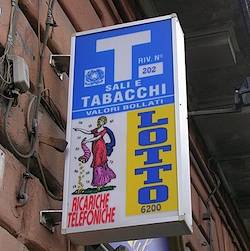 A Tabacchi (ta-BOCK-ee) in Italy is a tobacco shop. You will see the signs everywhere, in every town, large or small... a large white “T” on either a black or blue background. All tabacchi shops sell tobacco products--cigarettes, cigars, pipes, lighters, etc. They will also have an after hours machine, but unless you carry an Italian I.D. card you won't be able to buy cigarettes from a machine. But they are so much more, and can be especially useful to the voyager. You can purchase local bus, tram and Metro tickets and museum and tourist site passes, phone cards (international, too), and francobolli (postage stamps). Buying postage stamps in an actual Post Office can be a lesson in tolerance. For a few stamps, get them in the tabacchi. They can even add time/credit to SIM cellphones or even pay their household bills. You can buy your bus tickets at the tabacchi shops that display the "ATAF" symbol in their window for €1.20 for a 90 minute pass. If you have a cellphone, you can also buy a one time ticket via SMS, just text “ATAF” to the number 4880105 and in a few seconds you will receive an SMS with your valid e-ticket. This is valid for 90 minutes and the only extra cost is for the SMS itself. You might also find shipping supplies (labels, envelopes, tape), other stationary supplies (some with very nice pens) and even lottery tickets. Candy is common, as are some salty snacks, like chips. Others might have a vending machine for drinks. Greeting cards and post cards can also be found, but the greeting cards are not the best. Newspapers and the odd magazine might be offered by some, but there are other specialty shops for this called either Edicola or Negozio. In the end, you might see the "T" sign affixed to a much large shop that specializes in other things, like coffee and breakfast pastries, make-up, jewelry or perfumes. --Jerry Finzi If you got some useful information from this post, please share it on your favorite social media site. Grazie! From This Day in History, The History Channel: At noon on August 24, 79 A.D., the pleasure and prosperity of Pompeii came to an end when the peak of Mount Vesuvius exploded, propelling a 10-mile mushroom cloud of ash and pumice into the stratosphere. For the next 12 hours, volcanic ash and a hail of pumice stones up to 3 inches in diameter showered Pompeii, forcing the city’s occupants to flee in terror. Some 2,000 people stayed in Pompeii, holed up in cellars or stone structures, hoping to wait out the eruption. Mount Vesuvius erupted after centuries of dormancy, which when you think about it, means that the people of the day had no way of knowing that their neighboring mountain was even a volcano. Mount When Vesuvius erupted it devastated the prosperous Roman cities of Pompeii and Herculaneum and killed thousands. The cities, buried under a thick layer of volcanic material and mud, were never rebuilt and largely forgotten in the course of history. In the 18th century, Pompeii and Herculaneum were rediscovered and excavated, providing an unprecedented archaeological record of the everyday life of an ancient civilization, startlingly preserved in sudden death. The ancient cities of Pompeii and Herculaneum thrived near the base of Mount Vesuvius at the Bay of Naples. In the time of the early Roman Empire, 20,000 people lived in Pompeii, including merchants, manufacturers, and farmers who exploited the rich soil of the region with numerous vineyards and orchards. None suspected that the black fertile earth was the legacy of earlier eruptions of Mount Vesuvius. Herculaneum was a city of 5,000 and a favorite summer destination for rich Romans. Named for the mythic hero Hercules, Herculaneum housed opulent villas and grand Roman baths. Gambling artifacts found in Herculaneum and a brothel unearthed in Pompeii attest to the decadent nature of the cities. There were smaller resort communities in the area as well, such as the quiet little town of Stabiae. A westerly wind protected Herculaneum from the initial stage of the eruption, but then a giant cloud of hot ash and gas surged down the western flank of Vesuvius, engulfing the city and burning or asphyxiating all who remained. This lethal cloud was followed by a flood of volcanic mud and rock, burying the city. The people who remained in Pompeii were killed on the morning of August 25 when a cloud of toxic gas poured into the city, suffocating all that remained. A flow of rock and ash followed, collapsing roofs and walls and burying the dead. Much of what we know about the eruption comes from an account by Pliny the Younger, who was staying west along the Bay of Naples when Vesuvius exploded. In two letters to the historian Tacitus, he told of how “people covered their heads with pillows, the only defense against a shower of stones,” and of how “a dark and horrible cloud charged with combustible matter suddenly broke and set forth. Some bewailed their own fate. Others prayed to die.” Pliny, only 17 at the time, escaped the catastrophe and later became a noted Roman writer and administrator. His uncle, Pliny the Elder, was less lucky. Pliny the Elder, a celebrated naturalist, at the time of the eruption was the commander of the Roman fleet in the Bay of Naples. After Vesuvius exploded, he took his boats across the bay to Stabiae, to investigate the eruption and reassure terrified citizens. After going ashore, he was overcome by toxic gas and died. According to Pliny the Younger’s account, the eruption lasted 18 hours. Pompeii was buried under 14 to 17 feet of ash and pumice, and the nearby seacoast was drastically changed. Herculaneum was buried under more than 60 feet of mud and volcanic material. Some residents of Pompeii later returned to dig out their destroyed homes and salvage their valuables, but many treasures were left and then forgotten. In the 18th century, a well digger unearthed a marble statue on the site of Herculaneum. The local government excavated some other valuable art objects, but the project was abandoned. In 1748, a farmer found traces of Pompeii beneath his vineyard. Since then, excavations have gone on nearly without interruption until the present. In 1927, the Italian government resumed the excavation of Herculaneum, retrieving numerous art treasures, including bronze and marble statues and paintings. 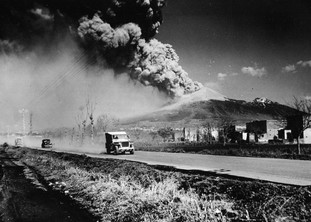 Vesuvius erupting in 1944 Vesuvius erupting in 1944 The remains of 2,000 men, women, and children were found at Pompeii. After perishing from asphyxiation, their bodies were covered with ash that hardened and preserved the outline of their bodies. Later, their bodies decomposed to skeletal remains, leaving a kind of plaster mold behind. Archaeologists who found these molds filled the hollows with plaster, revealing in grim detail the death pose of the victims of Vesuvius. The rest of the city is likewise frozen in time, and ordinary objects that tell the story of everyday life in Pompeii are as valuable to archaeologists as the great unearthed statues and frescoes. It was not until 1982 that the first human remains were found at Herculaneum, and these hundreds of skeletons bear ghastly burn marks that testifies to horrifying deaths. Today, Mount Vesuvius is the only active volcano on the European mainland. Its last eruption was in 1944 and its last major eruption was in 1631. Another eruption is expected in the near future, would could be devastating for the 700,000 people who live in the “death zones” around Vesuvius. If you liked this post, please SHARE it with your friends... ciao!
(ANSA) - Florence, August 24 - Torrential rains flooded roads throughout the Tuscan province of Siena Monday, setting off landslides and interrupting the ancient Roman Cassia consular road and the highway from Siena to Grosseto, police said. Rains were also overflowing rivers and streams in the Pisa area.
As much as 8 inches of rain fell in the province within a six hour period, closing many secondary roads due to landslides and isolating the town of Asciano as fierce torrents prevented any access. An ambulance carrying an elderly woman with a broken leg was blocked along the Cassia at Monteroni d'Arbia. Civil protection services rescued her aboard another vehicle and took her to Siena hospital. Also in the same location, divers rushed to check whether anybody was trapped inside a car submerged beneath an underpass. |
Categories
All
Archive
June 2024
|


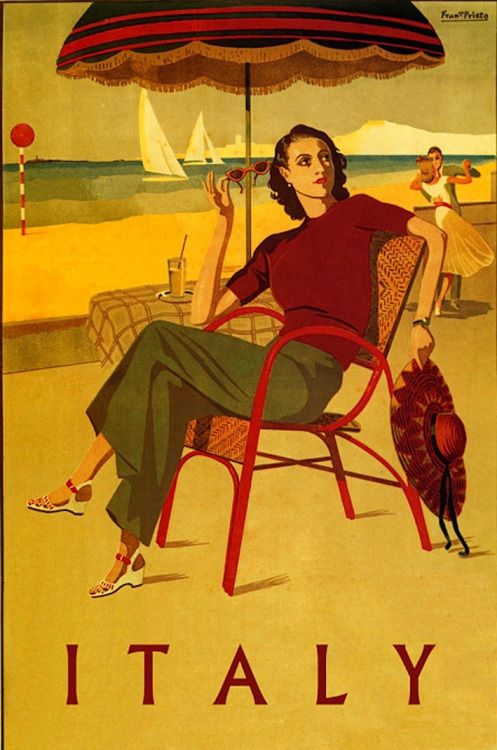



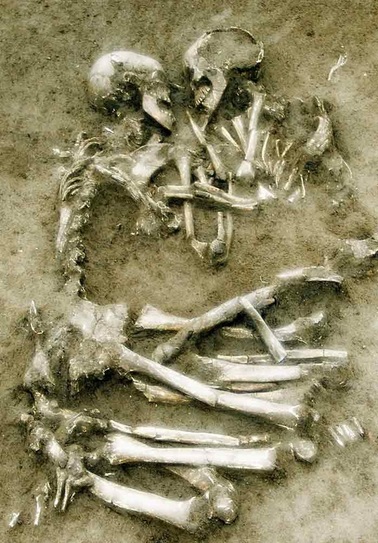
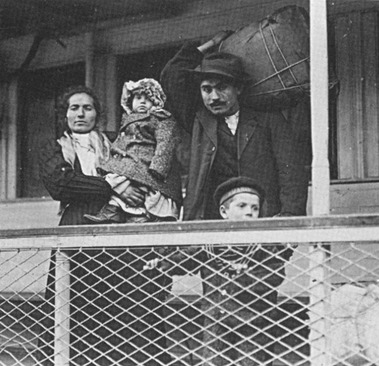
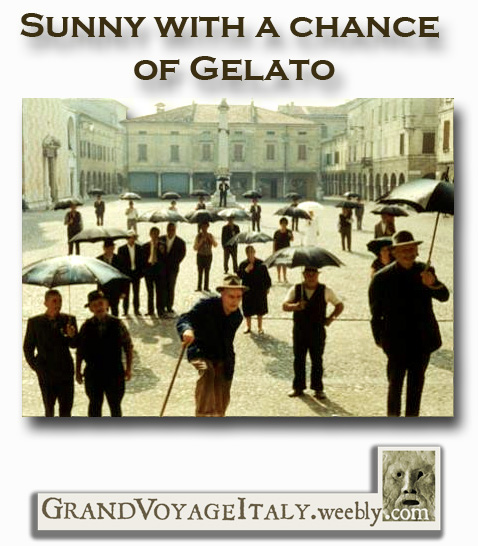
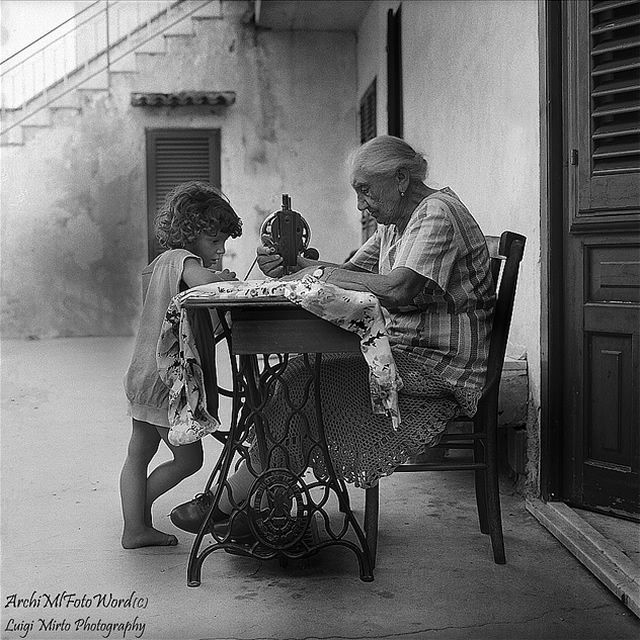
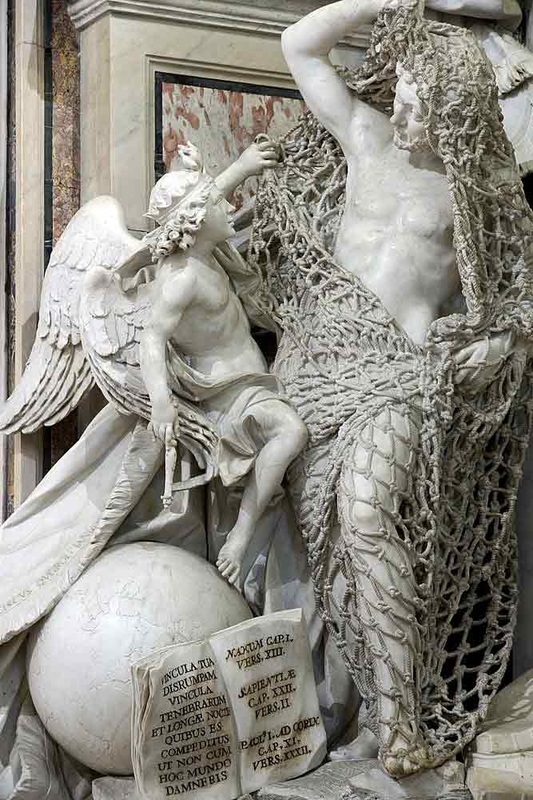

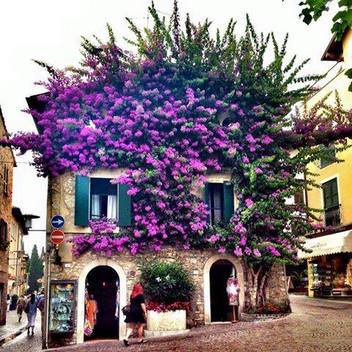
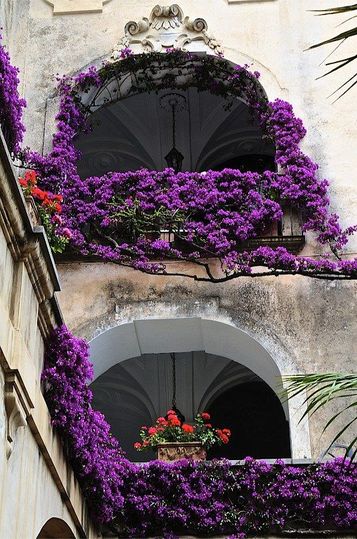

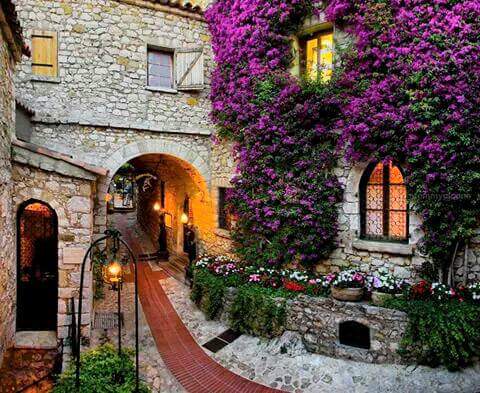
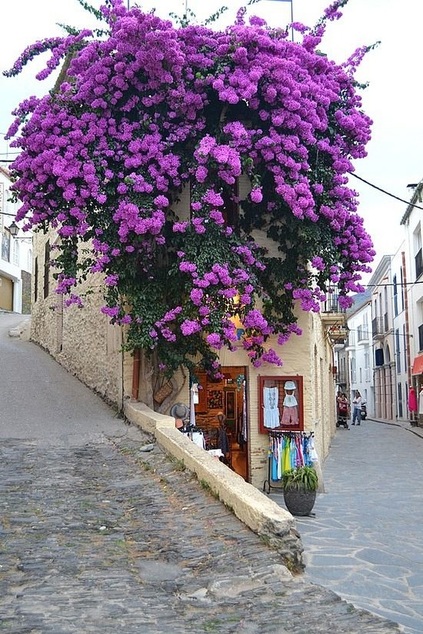

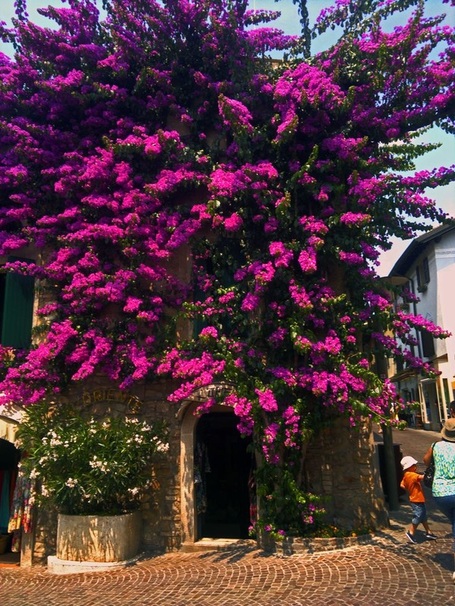
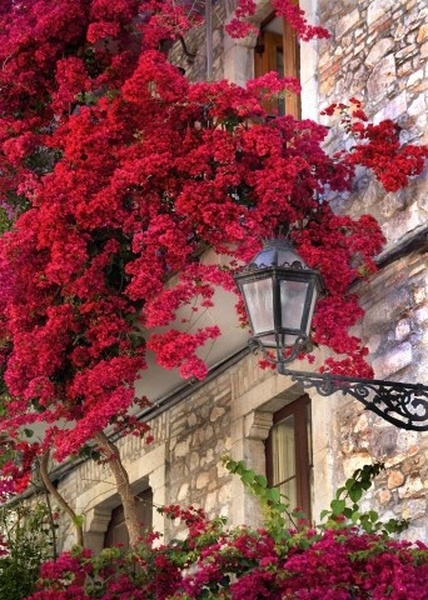

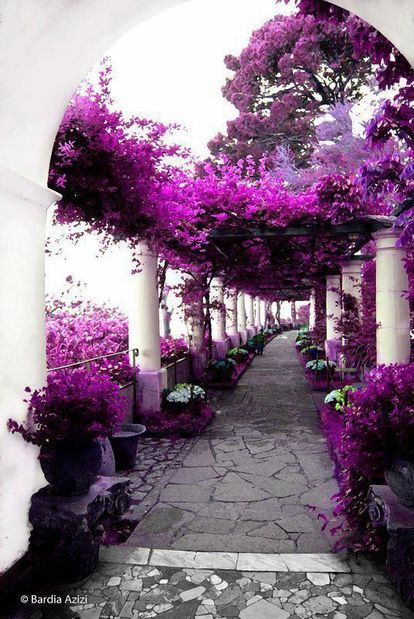
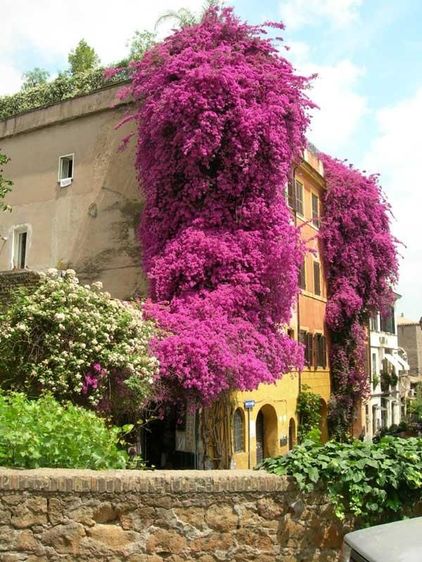
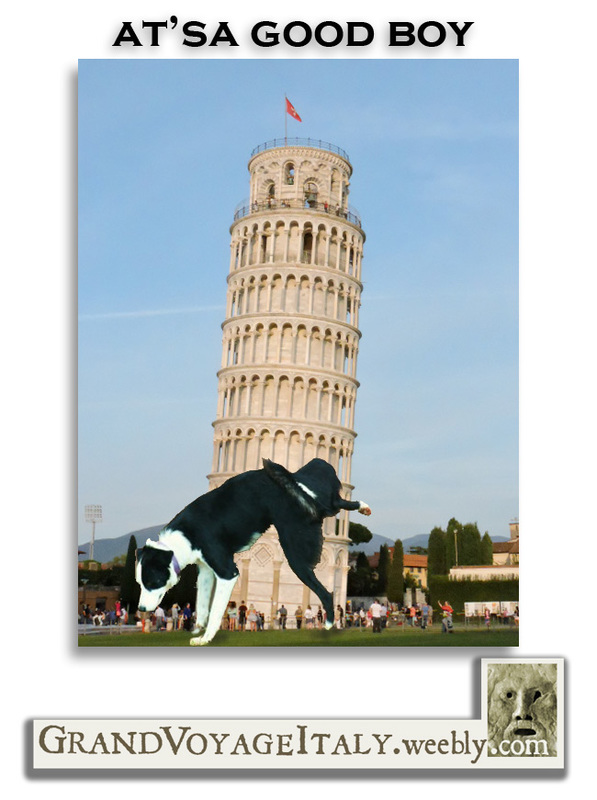
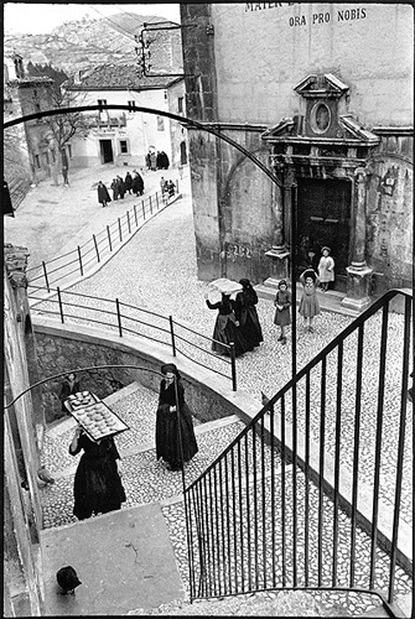
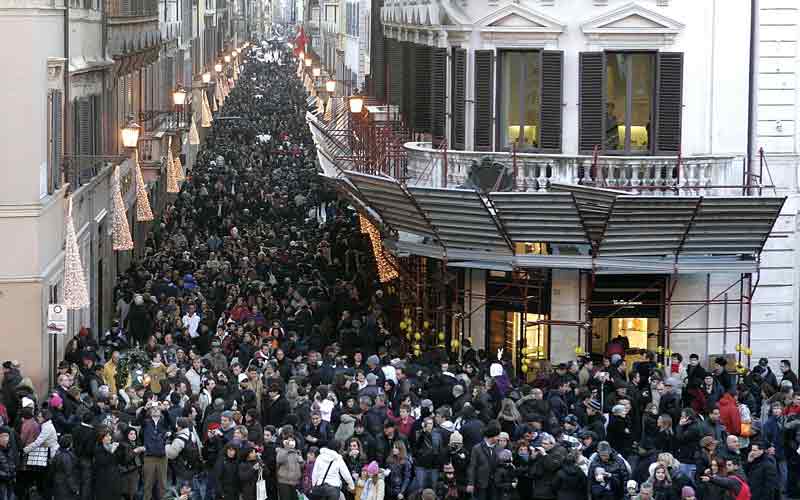

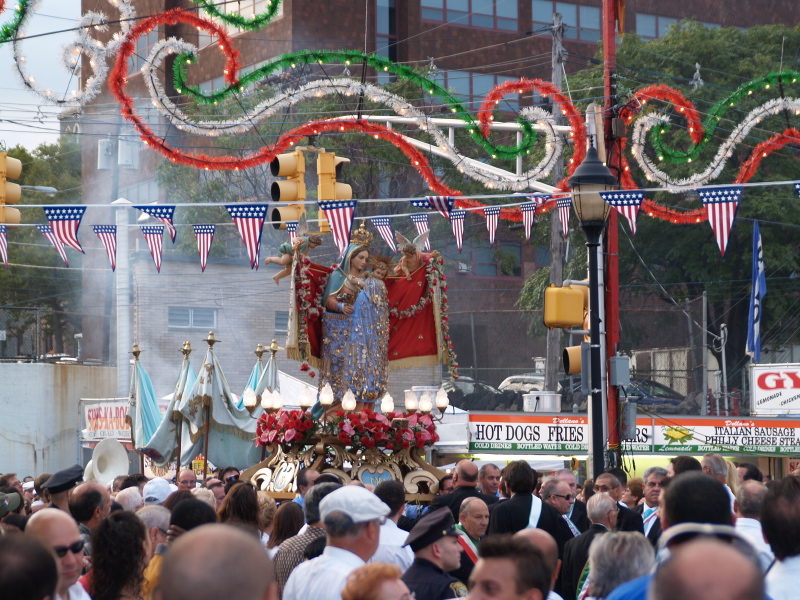
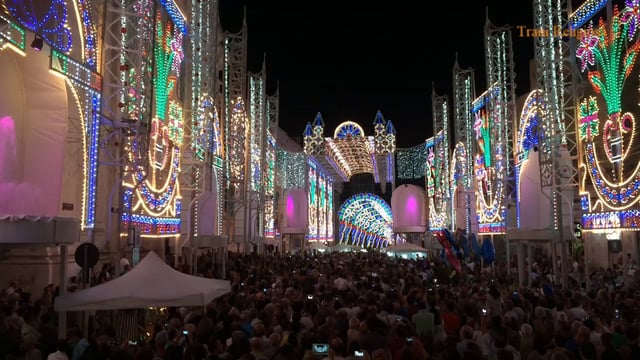
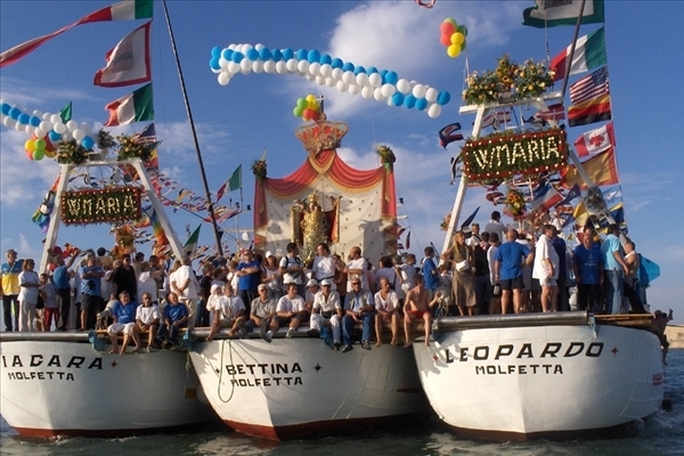
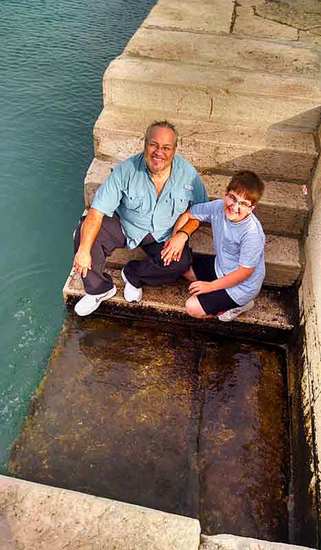

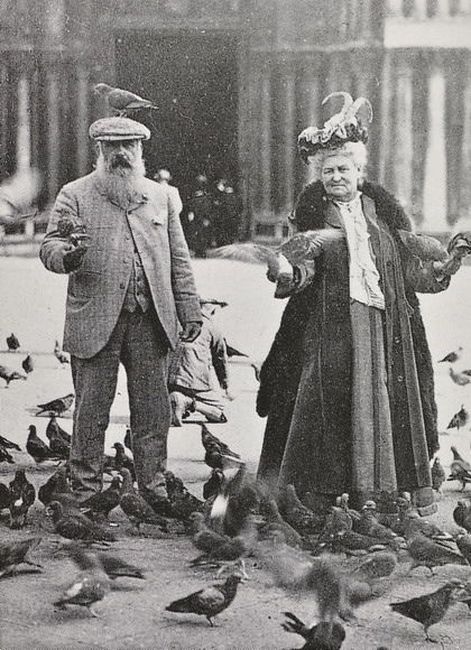
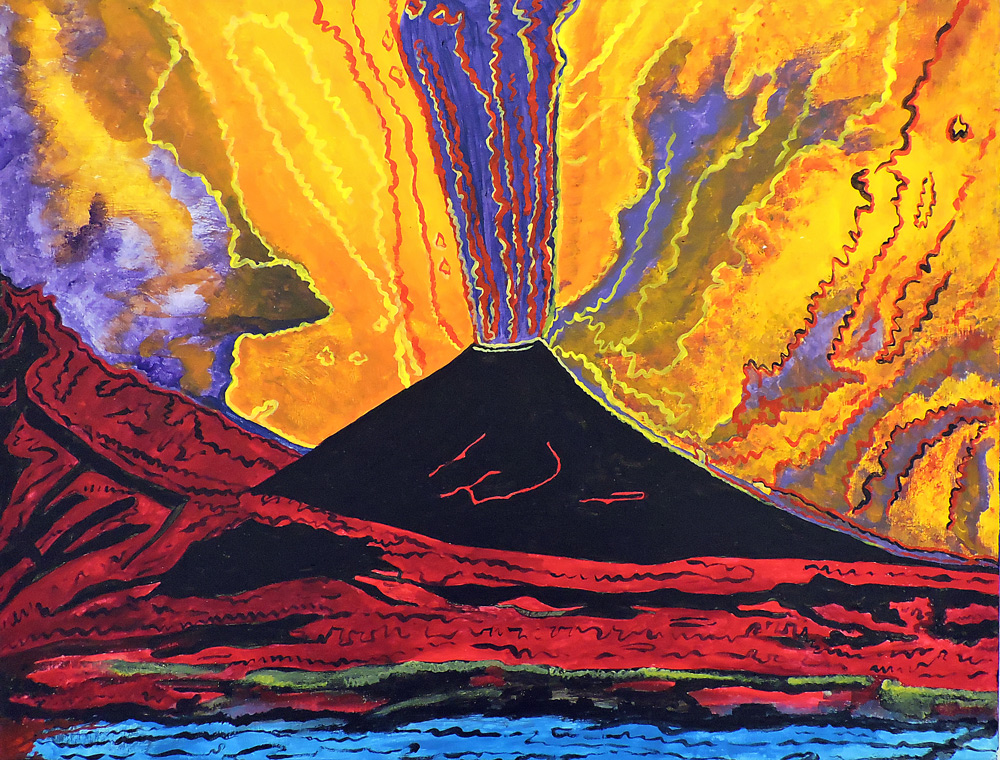
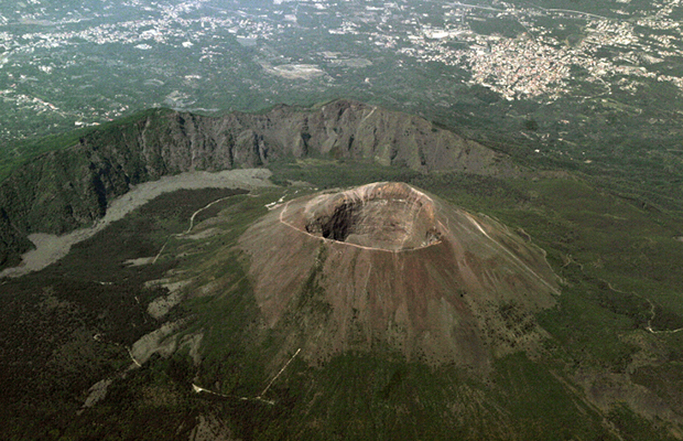
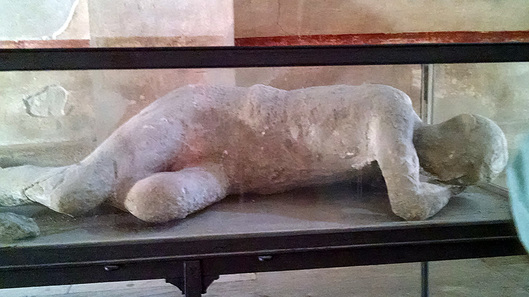
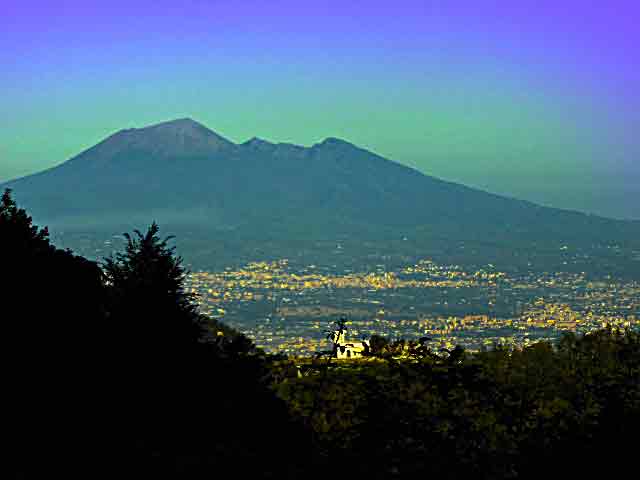
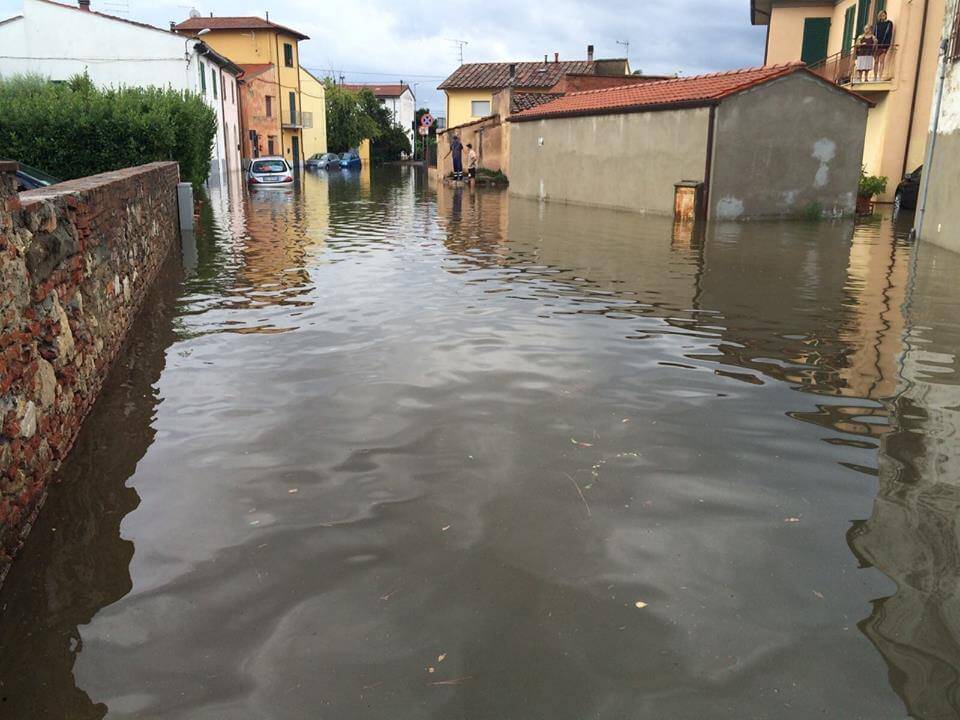
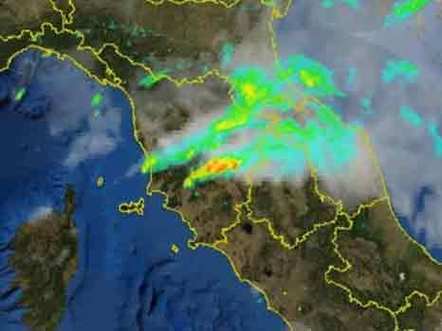
 RSS Feed
RSS Feed
